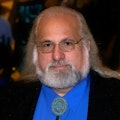With Ampere Deal, SoftBank Tightens Its Grip on AI Data Centers
In a move that has a lot of the semiconductor and AI chip industry reacting by saying “Well, that’s interesting,” Softbank Group announced its plan to acquire ARM processor design company Ampere computing in a $6.5 billion cash deal, with the agreement of current investors Carlyle Group and Oracle.
The deal is expected to close in the second half of 2025. By acquiring Ampere, SoftBank now owns both the underlying architecture (Arm) and one of the top companies designing Arm-based data center CPUs.
Strategic Vertical Integration
This vertical integration play can give SoftBank a stronger position in the market for future data center processors, and fits with the company’s vision of being a major player in the next generation of data center, cloud, and AI dominated computing.
SoftBank had acquired ARM, which licenses the core architecture and instruction set for the RISC design, in 2016.
Ampere, and its roughly 1,000 semiconductor engineers, will continue to operate as an independent unit within SoftBank and not be rolled up into the existing ARM business unit.
Renee James, Founder and CEO of Ampere, said of the acquisition:
With a shared vision for advancing AI, we are excited to join SoftBank Group and partner with its portfolio of leading technology companies. This is a fantastic outcome for our team, and we are excited to drive forward our AmpereOne® roadmap for high performance Arm processors and AI.
More Benefits of the Acquisition
With Ampere’s focus on sustainable computing, and the advantages that ARM processors can offer in terms of performance-per-watt, better energy efficiency, and reduced cooling demand, the acquisition fits well in the current industry model of building more sustainable futures and meeting demands to be a green tech leader.
SoftBank can now offer end-to-end technology solutions, from edge devices (via Arm) to cloud-scale processors (via Ampere).
When Arm was initially acquired, the demand for the processors was seen as being driven by the future of IoT. In the intervening 9 years, the focus has clearly moved to the data center as the energy efficiency of ARM-based designs meshes well with the demands of the data center industry.
According to the announcement of the acquisition, the rationale behind the purchase is “aligned with SBG’s broader strategic vision and commitment to driving innovation in AI and compute.”
Masayoshi Son, Chairman and CEO of SoftBank Group Corp., said:
The future of Artificial Super Intelligence requires breakthrough computing power. Ampere’s expertise in semiconductors and high-performance computing will help accelerate this vision, and deepens our commitment to AI innovation in the United States.
AmpereOne-3 Processor Approaches
Ampere has announced that its next generation processor, the AmpereOne-3 is scheduled to launch in 2025. The processor is currently in the fabrication stage at chip foundry TSMC.
The expectation is that this advanced CPU will feature 256 cores and be manufactured using TSMC's 3-nanometer (3nm) process technology, marking a significant evolution in Ampere's processor lineup.
In addition to the increased core count and the use of the more efficient 3nm process, the new processors are expected to support 12 channels of DDR5 memory, potentially a 50% increase in memory bandwidth compared to their existing products.
While processors such as the next generation Ampere lack the specialized AI accelerators like GPUs or TPUs, they are optimized for predictable, high-throughput performance.
This makes them efficient candidates for running LLM inference in production environments, powering AI-enhanced cloud applications, and supporting recommendation engines, personalization, search indexing.
All of these tasks can benefit from the processor capabilities while delivering improved sustainability when compared with GPU or X86 based environments.
Additional Softbank Perspective
The Ampere acquisition is not SoftBank’s first step into the AI data center processor market, having acquired custom AI silicon developer Graphcore in June 2024.
The company was one of the first to validate market need for non-GPU AI accelerators. They introduced their Intelligent Processing Unit (IPU), a non-GPU design built from the ground up for AI and ML workloads, as well as a full stack AI solution that included their Poplar SDK software stack that allows ML models to run on the IPU.
Unfortunately, it could be said that regardless of the technical interest in the IPU and it’s non-GPU design, the company ran straight into the buzzsaw that was the massive interest in NVIDIA and the AI GPUs released in the same time frame.
However, Graphcore co-founder and CEO Nigel Toon was optimistic about the future of their technology after the SoftBank acquisition, saying:
This is a tremendous endorsement of our team and their ability to build truly transformative AI technologies at scale, as well as a great outcome for our company. Demand for AI compute is vast and continues to grow. There remains much to do to improve efficiency, resilience, and computational power to unlock the full potential of AI. In SoftBank, we have a partner that can enable the Graphcore team to redefine the landscape for AI technology.
The Big Picture
Integrating Graphcore with the incoming Arm Holdings infrastructure has SoftBank looking to develop comprehensive AI solutions that combine Arm's energy-efficient designs with Graphcore's specialized AI accelerators, potentially enhancing performance in AI and machine learning applications.
SoftBank's strategy includes creating a network of AI data centers powered by Arm and Graphcore technologies, looking to provide alternatives to existing solutions and reduce reliance on dominant players, while capitalizing on the energy efficiency and improved sustainability metrics of data centers built on these technologies.
The acquisition of Ampere and their design expertise fits well with this projected model, with the potential for some of the technologies being pioneered by Ampere to be integrated with the core Arm vision, while Ampere remains its own entity within the SoftBank ecosystem.
From Silicon to Stargate: Aligning with OpenAI, Oracle, and the Future of AI Infrastructure
The Ampere acquisition doesn’t stand alone. It is the latest and perhaps most strategic move in a broader chess game SoftBank is playing across the AI and data infrastructure landscape. To understand its full impact, the deal must be seen in context with SoftBank’s recent alignment with two other heavyweight players: OpenAI and Oracle.
As you might've heard, earlier this year, OpenAI unveiled plans for its Stargate project—a massive, multi-billion-dollar supercomputing campus set to come online by 2028. Stargate is expected to be one of the largest AI infrastructure builds in history, and Oracle will be the primary cloud provider for the project. Behind the scenes, SoftBank is playing a key financial and strategic role, helping OpenAI secure capital and compute resources for the long-term training and deployment of advanced AI models.
Oracle, in turn, is both an investor in Ampere and a major customer—one of the first hyperscale operators to go all-in on Ampere’s Arm-based CPUs for powering cloud services. With SoftBank now controlling Ampere outright, it gains a stronger seat at the table with both Oracle and OpenAI—positioning itself as an essential enabler of the AI supply chain from silicon to software.
The Ampere deal gives SoftBank direct access to a custom silicon pipeline purpose-built for the kind of high-efficiency, high-throughput compute that AI inference and model serving demand at scale. Combine this with SoftBank’s ownership of Arm, the bedrock of energy-efficient chip design, and its portfolio now spans everything from the instruction set to the cloud instance.
More importantly, it gives SoftBank leverage. In a world where NVIDIA dominates AI training workloads, there’s growing appetite for alternatives in inference, especially at scale where power, cost, and flexibility become deciding factors. Ampere’s CPU roadmap, combined with Graphcore’s AI acceleration tech and Arm’s global design ecosystem, offers a compelling vision for an open, sustainable AI infrastructure stack—not just for SoftBank’s own ambitions, but for partners like OpenAI and Oracle who are building the next layer of the internet.
In short, SoftBank isn’t just assembling parts. It’s building a vertically integrated platform for AI infrastructure—one that spans chip design, data center hardware, cloud partnerships, and capital investment. The Ampere acquisition solidifies that platform, and in the long run, may prove to be the most pivotal piece yet.
About the Author



